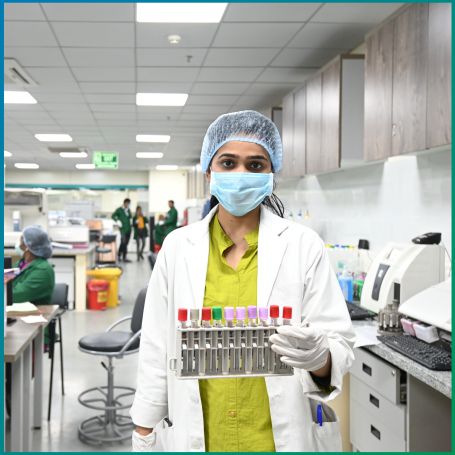
The C/S Peritoneal Fluid Test is a diagnostic method used to identify microbial infections in the peritoneum—the lining of the abdominal cavity.

The C/S Peritoneal Fluid Test (Culture and Sensitivity of Peritoneal Fluid) is an essential diagnostic procedure used to identify infections in the peritoneal cavity. This test is particularly important for patients undergoing peritoneal dialysis (PD), as they are at an increased risk of developing peritonitis and other infections. The peritoneal cavity is a vital part of the body that surrounds the abdominal organs, and when infected, it can lead to serious complications. The C/S Peritoneal Fluid Test is designed to detect the presence of pathogens in the peritoneal fluid, which can guide healthcare providers in determining the most effective treatment options.
1] Sample Collection - The first step in the C/S Peritoneal Fluid Test is the collection of a sample of peritoneal fluid. For patients undergoing peritoneal dialysis, fluid is typically collected through the dialysis catheter. This is done under sterile conditions to avoid contamination and ensure the accuracy of the test results. The sample is often obtained when the patient experiences symptoms such as abdominal pain, fever, or cloudy dialysis fluid.
2] Culture and Incubation - Once the sample is collected, it is sent to a microbiology laboratory where it is cultured in a controlled environment. Various types of media are used to encourage the growth of microorganisms, depending on the suspected pathogen. The sample is incubated for 24 to 48 hours, allowing bacteria, fungi, or other pathogens to proliferate.
3] Identification of Pathogens - After the microorganisms have grown, laboratory technicians perform a series of tests to identify the specific pathogen responsible for the infection. These tests may include Gram staining, biochemical tests, or advanced molecular techniques such as PCR (polymerase chain reaction) to identify bacterial, fungal, or parasitic organisms.
4] Sensitivity Testing - Once the pathogen has been identified, the laboratory performs sensitivity testing to determine which antibiotics, antifungals, or antimicrobial agents will be most effective against the identified pathogen. The sensitivity test helps healthcare providers choose the right medication for treatment, ensuring the infection is addressed with the most effective drugs.
5] Reporting Results - The laboratory will provide a detailed report that includes the identified pathogen(s) and the results of the sensitivity tests. The results typically take 48 to 72 hours, depending on the microorganism and the complexity of the sensitivity testing.
Choosing Diagnopein Diagnostic Centre in Pune for the C/S Peritoneal Fluid Test ensures the highest level of accuracy and reliability in diagnosing infections in peritoneal dialysis patients. Diagnopein’s advanced laboratory infrastructure and skilled microbiology team use state-of-the-art techniques to efficiently identify pathogens and perform sensitivity testing, ensuring that the correct treatment is prescribed. With a focus on timely results and comprehensive patient care, Diagnopein offers fast turnaround times and precise, detailed reports that help healthcare providers make informed decisions. Their commitment to quality, patient safety, and customer service makes Diagnopein the preferred choice for healthcare professionals seeking effective diagnostic solutions for peritoneal infections.
1. Culture Method
2. Sample
3. Colony Count
4. Organism(s) Isolated
5. Culture Report: Culture yields growth of
6. Culture isolated after 7 days :
7. Culture isolated after 14 days:
8. Culture isolated after 21 days:
9. Ampicillin
10. Amikacin
11. Amoxicillin clavulanate
12. cefoperazon+sulbactam
13. Cefuroxime
14. Cefepime
15. Cefotaxime
16. Ciprofloxacin
17. Ertapenem
18. Gentamicin
19. Imipenem
20. Meropenem
21. Norfloxacin
22. Nitrofurantoin
23. Piperacillin-tazobactam
24. Trimethoprim-Sulfamethoxazole (Cotrimoxazole)
This test is performed when a peritoneal dialysis patient shows symptoms of infection, such as cloudy fluid, abdominal pain, or fever. It helps diagnose peritonitis and other infections by identifying the cause and guiding treatment.
The test can detect bacterial infections (e.g., Staphylococcus aureus, E. coli), fungal infections (e.g., Candida), and other pathogens that cause peritonitis or catheter-related infections.
The test involves collecting fluid through the dialysis catheter, which is generally not painful, though mild discomfort may occur during the procedure.
Sensitivity testing identifies the most effective antibiotics or antifungals for treating the infection, ensuring the patient receives the best possible treatment based on the specific pathogen.